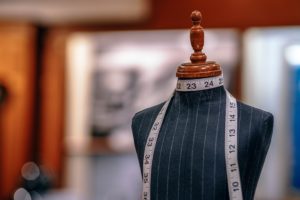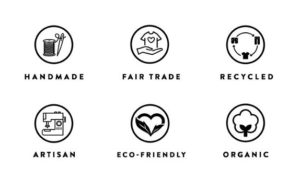
It may feel like the clothes you make have no influence on the big sellers in the fashion industry but it really does make a difference.
When you choose to buy your own fabrics and treasure the items you make there is a ripple effect across the high street.

You may have recently seen Stacey Dooley investigates Fashions Dirty Secrets.
Many people were shocked to see the damage caused to the environment and to peoples lives by mass cotton production. The gut reaction is that all cotton fabric production must be bad. We feel instantly guilty for using cotton at all. But we all have to wear clothes (unless we live somewhere tropical and free thinking! ) so we have to start thinking in differently about fashion.

Fashion is a $2.4 trillion worldwide business that employs 70 million people across the world. The bad news to this huge growth is that it has become the second biggest polluter after the oil industry.
A trend for fast fashion has not built up over night. It has grown with consumerism and a faster paced world.
“Fast fashion clothing collections are based on the most recent fashion trends presented at Fashion Week in both the spring and the autumn of every year. Emphasis is on optimising certain aspects of the supply chain for these trends to be designed and manufactured quickly and inexpensively to allow the mainstream consumer to buy current clothing styles at a lower price. This philosophy of quick manufacturing at an affordable price is used in large retailers such as H&M, Zara, Peacocks, Primark, Xcel Brands, and Topshop. It particularly came to the fore during the vogue for “boho chic” in the mid-2000s.”[Source]
What grew from these seasonal trends escalated into a demand which was no longer seasonal but instead created monthly and even weekly stock changes in stores. Cheaper and cheaper prices, and lower quality manufacturing created the disposable feel where clothes are worn once and then disposed of. Not only are customers throwing out this clothing prematurely but the stores are too.
The result of this is mountains of clothes in landfill as the previous trend is taken off the shelves and a new whim arrives. The reality of this situation is unsustainable and customers are beginning to demand changes.
It may be that you think your actions will not be noticed in such a huge market. But little actions taken by many individuals can create growing waves that make manufacturers sit up and take notice.
“Fast fashion may be on its last legs. Take it from H&M, which was forced to admit in its March financial report that it had $4.3 billion of unsold inventory left hanging on its racks, along with a massive drop in sales. In fact, the Swedish company has started incinerating clothes in power plants to generate energy. When you consider all of the raw materials, chemical pollution, human labour, and transportation costs required to make just a single shirt, the scale of the waste is astounding. But the fact that we’re not buying the goods that H&M is churning out also sends a powerful message to the company: We’ve lost our appetite for fast fashion, the category of clothes that H&M helped pioneer.”[Source]
As more and more of us buck the fast fashion phase it forces a worldwide change which is so desperately needed.

Do you feel like you aren’t making a difference? I promise you, You really are.
When you choose your own fabrics you have the ability to choose fabrics of a higher standard. Our Oeko tex 100 standard fabrics and our organic cotton jerseys are moving towards safer sustainable fibre options with dyes which lessen the impact on our selves and our planet.
By choosing to make clothing yourself you give the item worth beyond the cost of the physical fabrics. You invest your time and your heart into the clothes you create. Unlike store bought clothing, handmade children’s clothes are treasured and passed on between friends or saved for future children. The number of clothes each child owns may be in fact be less, but each item is more valued and in turn more cared for making it last longer.
With each item you make for your child it is likely you are reducing not just one store bought item but several.
Slow Fashion is a growing movement and by sewing your own clothes you are part of it.

Shop responsibly in 2019. Your choices make a difference.